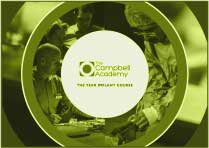I recently attended the ITI section AGM at the ITI education centre in Crawley and this year it was provided under a new format. There was a shortened ITI AGM for the business of the section towards the end of the day and prior to this there was an excellent scientific and education programme.
This first part consisted of a presentation by Thomas Kiss from Switzerland on the benefits and the updated modifications of ITI net. ITI net is the electronic communication platform for ITI members, which has now had more than 1 million swiss francs invested in over the past 2 years. This is truly phenomenal which has been designed any built by Thomas Kiss himself and to see the new updated modifications was fantastic. It is an amazing tool to gain information in scientific research in all aspects of implants dentistry. It provides publications in electronic format and also allows clinician’s to assess their patients using the Straightforward Advanced Complex (SAC) classification. It allows members to communicate with each other directly and also for the section to provide information to members for upcoming events. It has an excellent forum section where people can discuss individual cases and post images of difficulties or interesting cases.
Following this, we were also treated to an amazing couple of lectures by a clinician and a master technician from the University of Zurich. This is where the cerec system was initially designed and the lectures were base around digital impression techniques and the digital workflow and the accuracy of those systems. A comparison was made for Cerec, Lava and Itero and the lectures were presented in a fantastically clear and methodical way. The bottom line though and the one thing to pick up from these lectures was: in the initial phase, if you check the accuracy of a digital impression it is probably around about the same as a conventional impression. This does not seem to make the system particularly attractive but what we were lead to understand following the lectures, was that from now everything will be digitalized. This means that even if you take a conventional impression, the laboratory will, more than likely, digitalise the impression using a scanner. If this process is undertaken the analog or original type of impression becomes hugely inaccurate due to this process, whereas if a digital impression has been taken there is no more distortion in the process whatsoever through to construction. It is not possible to entirely construct a crown from a digital impression without using a model at any stage but the clinician and technician involved suggested that the model then becomes a final working appliance and the overall accuracy of the model is not crucial. The most crucial thing is the digital imprint. A fascinating view of where dentistry is going and no too far in the future now.








Leave a comment